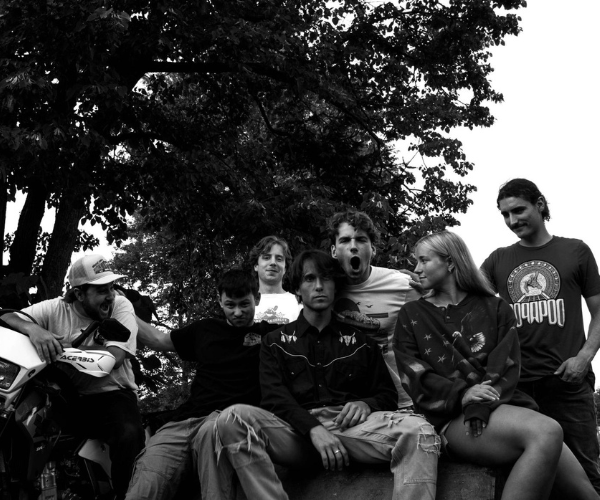Christian Wulffen is interested in information — how it is gathered, processed, decoded and assembled. The chief themes of his work find Wulffen playing artist-philosopher, asking open-ended questions such asHow do we know what we know? andIs it this or that? His work examines how we translate the world around us. He is interested in context juxtaposition: situating everyday objects in scenarios that cause a pause for perception.
“I believe whatever you see, it needs to be decoded, it needs to be made understandable,” says Wulffen, who is a systematic analyzer. He suggests that every object is a collection of information.
A German-born artist who came to the U.S. in 2003, Wulffen produces installations using everyday materials such as wood, newsprint and vinyl. He introduces basic objects, such as a fence or couch, and builds them in such a rudimentary form that viewers must decipher what they are.
“His work encourages viewers to reflect upon the different factors, including environment, experience and memory, that influence our perception of the world around us,” says Megan Lykins Reich, associate curator at the Museum of Contemporary Art (MOCA) Cleveland, where Wulffen will introduce these ideas in the exhibit Christian Wulffen: It is, It is Not from Jan. 23 through May 10.
There will be 17 works on display in the gallery, and a wooden couch that Wulffen constructed will sit outside the gallery. The plywood structure will cause viewers to question,Is that a couch? Wulffen will help people decode the answer by using newspapers as couch cushions, symbolizing a place to sit and read. Every object in his show has a purpose: to help viewers decipher what they are looking at.
Wulffen’s interest in translation is not surprising, considering that English is his second language and he must communicate his knowledge as an artist in his daily work as an associate professor at the Cleveland Institute of Art. One of his courses at CIA is an experimental drawing class called “I Don’t Get It.” The class explores how society agrees on the meaning of “something” — anything — and how that understanding helps society communicate. He wants his students to dig deeper and figure out what information helps us decipher things.
He wants viewers to embrace the same process at his show.
“We can expect an assortment of visual information, from billboard-sized photographs to graphite drawings to large, fencelike wooden sculptures,” Reich says. “As the title of Wulffen’s exhibition suggests, he prompts us to consider how we frame and interpret information to determine whether something ‘is’ or ‘is not.’ ”
“I believe whatever you see, it needs to be decoded, it needs to be made understandable,” says Wulffen, who is a systematic analyzer. He suggests that every object is a collection of information.
A German-born artist who came to the U.S. in 2003, Wulffen produces installations using everyday materials such as wood, newsprint and vinyl. He introduces basic objects, such as a fence or couch, and builds them in such a rudimentary form that viewers must decipher what they are.
“His work encourages viewers to reflect upon the different factors, including environment, experience and memory, that influence our perception of the world around us,” says Megan Lykins Reich, associate curator at the Museum of Contemporary Art (MOCA) Cleveland, where Wulffen will introduce these ideas in the exhibit Christian Wulffen: It is, It is Not from Jan. 23 through May 10.
There will be 17 works on display in the gallery, and a wooden couch that Wulffen constructed will sit outside the gallery. The plywood structure will cause viewers to question,Is that a couch? Wulffen will help people decode the answer by using newspapers as couch cushions, symbolizing a place to sit and read. Every object in his show has a purpose: to help viewers decipher what they are looking at.
Wulffen’s interest in translation is not surprising, considering that English is his second language and he must communicate his knowledge as an artist in his daily work as an associate professor at the Cleveland Institute of Art. One of his courses at CIA is an experimental drawing class called “I Don’t Get It.” The class explores how society agrees on the meaning of “something” — anything — and how that understanding helps society communicate. He wants his students to dig deeper and figure out what information helps us decipher things.
He wants viewers to embrace the same process at his show.
“We can expect an assortment of visual information, from billboard-sized photographs to graphite drawings to large, fencelike wooden sculptures,” Reich says. “As the title of Wulffen’s exhibition suggests, he prompts us to consider how we frame and interpret information to determine whether something ‘is’ or ‘is not.’ ”



